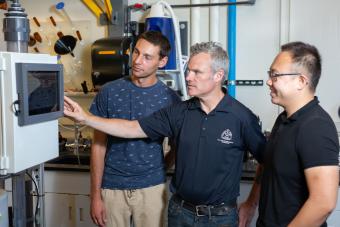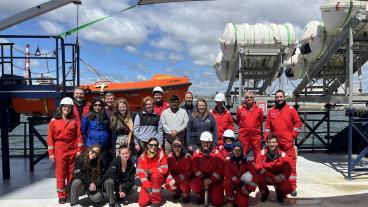Mines researchers receive $3M in DoD funding to develop processes to not just remove but destroy PFAS
Research team will design, build and demonstrate an integrated system of 3 technologies for removal, concentration and destruction of PFAS in contaminated water streams

Although poly- and perfluoroalkyl substances (PFAS) can be reliably removed from contaminated water resources, the best available treatment approaches use separation processes that create an issue all their own.
What do you do with the super-concentrated PFAS-contaminated residuals left over from these processes?
In the past, one option has been incineration, a process that can be used to destroy PFAS in contaminated media. But recent scrutiny, due to the unknowns regarding byproducts emanating from the combustion process as well as high costs and logistical issues like limited locations and transportation, have made incineration a much less viable option.
“There is a significant need to develop treatment approaches that eliminate PFAS as opposed to moving them around amongst different waste streams,” said Christopher Bellona, Associate Professor of Civil and Environmental Engineering at Colorado School of Mines.
Bellona is leading a team of researchers from the Department of Civil and Environmental Engineering at Mines that recently received a $3 million grant from the U.S. Department of Defense to validate such a process for the on-site treatment of PFAS that simultaneously includes treatment and destruction. Co-PIs are Timothy Strathmann, professor of civil and environmental engineering, and Tzahi Cath, professor of civil and environmental engineering.
In partnership with treatment vendors and environmental consultants, the research team will design, build, and demonstrate an integrated system of three technologies for removal, concentration, and destruction of PFAS in contaminated water streams. The three “plug-and-play” technologies and corresponding collaborators are:
- Closed-circuit membrane filtration (CCMF) by Mines, which is capable of producing PFAS-free water at more than 95% water recovery and resulting in a reject stream with elevated PFAS concentrations
- Surface active foam fractionation (SAFF®) by EPOC Enviro, a semi-continuous, low-energy system to remove and further enrich the PFAS in the reject stream by at least 1,000 times more
- Hydrothermal alkaline treatment (HALT) by Aquagga, a process that destroys the PFAS-laden foam fractionation concentrate. Developed by Strathmann and colleagues at Mines, HALT-PFAS was licensed to Aquagga for commercialization in 2023.
“The developed treatment train is designed to squeeze PFAS-free water out of a variety of PFAS-impacted water resources leading to more efficient PFAS destruction,” Bellona said.
Bellona’s team will start designing and building the treatment train at Mines this fall. In early 2025, the treatment train will be moved to a DoD site for long-term operation and data collection. Funding for this project comes from the U.S. Department of Defense Environmental Security Technology Certification Program (ESTCP).




